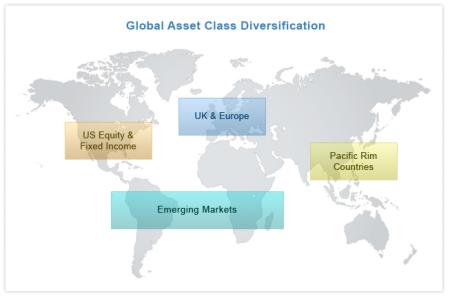Capital
markets
are
composed
of
different
types
of
asset
classes.
Asset
allocation
involves
dividing
an
investment
portfolio
among
different
asset
classes
based
on
an
investor's
financial
requirements.
The
right
mix
of
asset
classes
in
a
portfolio
provides
an
investor
with
the
highest
probability
of
meeting
their
need.
Each
asset
class
selected
has
a
long-term
expected
return
over
inflation,
known
as
the
'real'
return.
A
diversified
portfolio
will
include
U.S.
and
foreign
common
stock,
real
estate
(REITs),
basic
metals,
as
well
as
different
bond
components.
Asset
allocation
is
the
most
important
investment
decision
an
investor
will
make
in
their
portfolio
because
it
explains
most
of
the
risk
and
return.

Setting
up
your
portfolio
with
the
right
asset
classes
is
the
most
important
first
step
in
your
quest
to
financial
freedom
and
managing
it
is
the
second
most
important
thing
that
you
have
to
do.
Understand
your
risks
tolerance
What
is
the
right
asset
allocation
for
an
investor?
It
depends
on
two
issues.
First,
an
investor
should
design
a
portfolio
so
that
the
expected
return
satisfies
any
cash-flow
needs
today
and
in
the
future.
Second,
any
portfolio
selected
must
be
within
an
investor’s
tolerance
for
taking
investment
risk.
|
Seq
|
Percent
|
Type
|
|
1 |
25 |
US
Stocks |
|
2 |
25 |
Emerging
Market
Stocks |
|
3 |
10 |
High
Yield
Corporate
Bonds |
|
4 |
10 |
Short
Term
Investment
Grade
Bonds |
|
5 |
10 |
Inflation
Protected
Securities |
|
6 |
10 |
Real
Estate
Investment
Trust
Index |
|
7 |
10 |
Basic
Metals
(gold,
silver,
copper,
etc...) |
By
the
way,
once
you
set
up
your
winning
portfolio,
you
can
use
deep
in
the
money
put
options
to
protect
or
hedge
your
accounts
against
short
term
volatilities
in
the
market.
Who
can
ask
for
anything
else?
Our
objective
is
to
give
you
the
tools
that
you
need
to
succeed
in
this
market
and
your
brokers
don't
want
you
to
know
these
stuffs.

